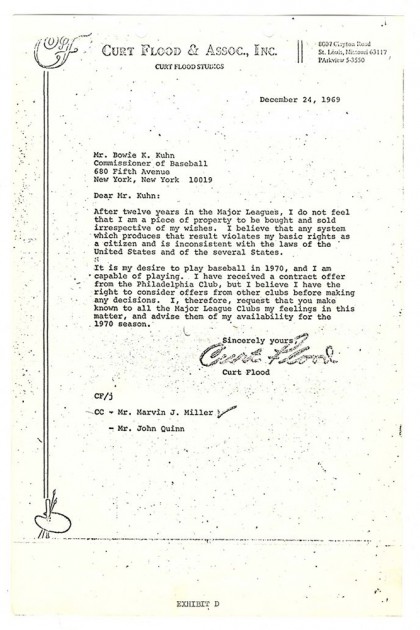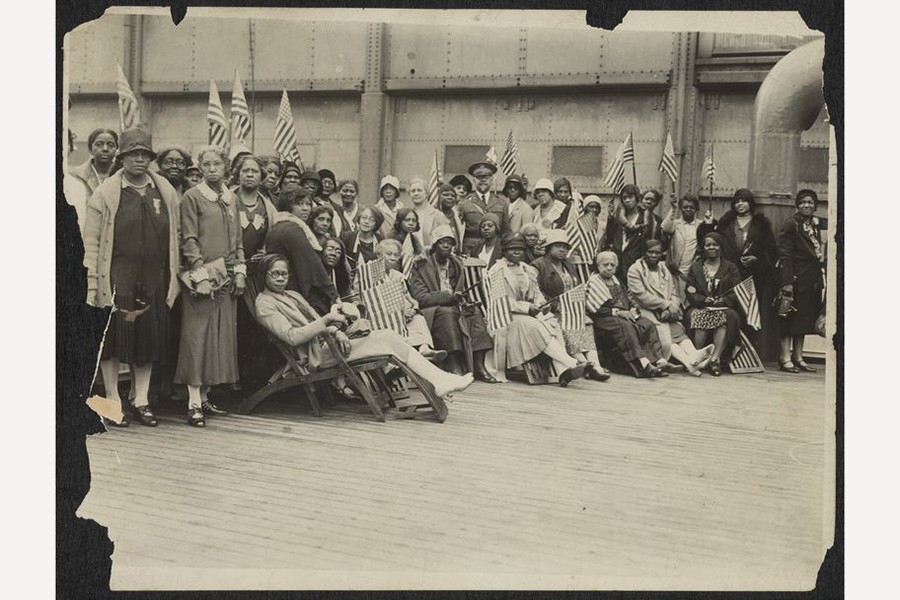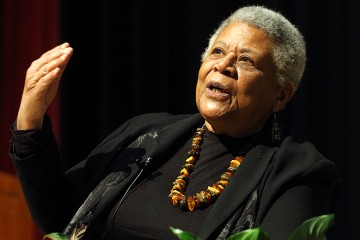Deep within the Special Collections at Johns Hopkins University, curators found a yellowed photo from 1930: About 40 black women are posed on a ship's deck, staring at the camera as they hold up American flags.
As curators learned, the women were on route to Europe to find the graves of their loved ones, part of a post-World War I effort by the U.S. government to honor the Gold Star mothers and widows of fallen American soldiers. Despite their sacrifices, and despite activist uproar, these black women were segregated from white passengers aboard the ship.
The photo is one of several relics of the world wars that appears in the Freedom Papers: Black Assertions from the Archives exhibit, which explores five historic narratives in total. A group of Johns Hopkins staffers and local book artist Martha Edgerton organized the display at the Sheridan Libraries.
Image caption: “Wallet Trammell Replica”
Image credit: The Sheridan Libraries and Museums
One item is a literal freedom paper: A replica of the handwritten certificate that granted Virginia slave Joseph Trammel rights as a free man, in 1850. The original document sits in the National Museum of African American History and Culture in Washington, D.C., but Edgerton—a former Hopkins conservator—created an exact duplicate along with the rusted tin box Trammel used to carry it.
Another Edgerton piece, a 3-D book cutout depicting the slave ship Amistad, was previously part of the artist's own traveling exhibit last year. Her collection, The Amazing Race: The Atlantic Slave Trade Through the Pages of Book Art, provided the inspiration for the Hopkins group to build out a broader exploration on expressions of black freedom.
View photos from the opening of the Freedom Papers exhibit
The curators, all members of JHU's Black Faculty and Staff Association, dug through the library's Special Collections to find artifacts to frame their narratives, from government documents to more personal postcards and photos. They added extra items from the digital National Archives and online newspapers.
"The story we wanted to tell was of empowered people who took action to pursue whatever freedom they needed to pursue,"says Sharon Morris, director of regional libraries at the Sheridan Libraries.

Image caption: “Flood Letter"
Image credit: The Sheridan Libraries and Museums
The resulting Freedom Papers exhibit spans more than 130 years, beginning with the 1839 mutiny at sea led by Joseph Cinque aboard the Amistad and ending with the 1969 standoff between St. Louis Cardinals player Curt Flood and Major League Baseball. In a letter on display, Flood writes that he is "not a piece of property to be bought and sold irrespective of my wishes," setting a legal precedent for baseball players to operate as free agents.
For the decades in between, the exhibit focuses on Jazz Age performer Josephine Baker, who was also a French resistance agent and a U.S. civil rights icon, and the contributions of black Americans in the two world wars.
"The idea of 'freedom' is very broad, and that's part of the point," says Shani Mott, an instructor in the Center for Africana Studies. "When you look back at black history, black intellectual production, and black art, one of the things we uncover is black people in all of their diversity expressing freedom in varied and different ways."
Freedom Papers, which opened in November and will remain on display through Feb. 28 in recognition of Black History Month, can be viewed on the M-level of the Milton S. Eisenhower Library on the Homewood campus and is also available online. The exhibit is sponsored by the Sheridan Libraries Exhibition Committee, the Black Faculty and Staff Association, and the Center for Africana Studies. In addition to Edgerton, Mott, and Sharon Morris, the curators include John Morris, Jeanette Brown, Anita Norton, and Meredith Shelby.
Posted in Arts+Culture, University News, Politics+Society
Tagged sheridan libraries, special collections, black history month









